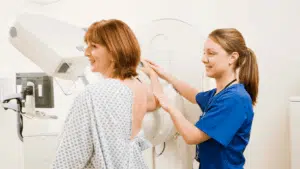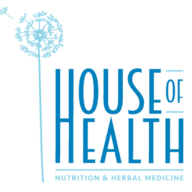Breast cancer is the most common cause of cancer death among women and the fifth most common cause of overall cancer death worldwide. In New Zealand there were 80.6 new cases of breast cancer per 100,000 (2003). An estimated ….. women are diagnosed with breast cancer in New Zealand each year and some ….. die from it. 80.6 cases per 100,000 in 2003.
Mammography has long been touted as the best (only) way to detect breast cancer, and women have this procedure routinely under the impression that it can save her life. NZ guidelines are that all women between the ages of 45 and 69 with low risk for breast cancer have a mammogram every two years.
However, new research reveals that there is a fairly slim chance that a mammogram will save her life! “For a woman in the screening subset of mammography-detectable cancers, there is a less than 5 percent chance that a mammogram will save her life. By comparing mammography’s life-saving absolute benefit with its expected harms, a well-informed woman along with her physician can make a reasonable decision to screen or not to screen for breast cancer.”
The researcher did find that as the risk of death from breast cancer increased (with age), the benefit of mammograms in saving lives also gradually increased.
Between the age of 55 and 70, a woman’s risk of developing breast cancer is around 6 percent, with a 1 percent chance of her death being caused by that cancer . The researchers concluded that if 1,000 women started consistent mammography screening at the age of 50, 1.8 lives would be saved. In other words “2,970 women must be screened once to save one life”, wrote the researchers.
This means that commencing regular breast cancer screening at age 40 only decreases a woman’s risk of dying from cancer by 0.1 percent.
Sharon Erdrich has long been opposed to this for the simple reason that we know that radiation causes cancer and that traumatised tissue is more prone to damage. A mammogram first traumatises the tissue and then exposes it to radiation!
In the new study, published in the journal (ref: University of Nebraska & John H Stroger Jr Hospital research)BioMed Central Medical Informatics and Decision Making,
That is not to say that mammograms are useless. What is important is that women and doctors have a realistic understanding of what benefits regular breast cancer screening can actually provide. Mammograms miss 20% of cancers, even BreastScreen Aotearoa publishes the fact they miss 15 – 25%. Women need to be told the benefits and the harms (which are not usually mentioned at all, or are down-played). Women need to make their own decision without emotive pressures.
“We have assumed that a ‘life saved’ means screening helps cure one woman with breast cancer who would otherwise have died from the disease without screening,” wrote the researchers. “However, all women with breast cancer may theoretically benefit from screening mammography through slowing the disease and therefore slightly prolonging their lives.” Unfortunately they did not compare it to the no-risk thermographic screening options.
Other research has shown that over a 10 year period, one third of the women screened had abnormal test results (false positives) and underwent unnecessary biopsy or other investigative procedures. The mental an emotional impact of this has not been acknowledged by the researchers.
ref: Ten-Year Risk of False Positive Screening Mammograms and Clinical Breast Examinations, Joanne G. Elmore, M.D., NEJM April 1998: 338:16 (1089-1096)
Read about the better alternative to regular mammograms – breast thermography












